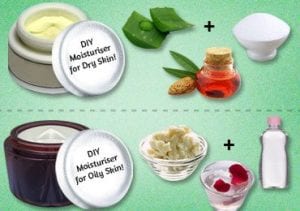Are you curious about the power of skincare ingredients? Do you want to know which ones will make the biggest transformation for your skin? As Skin Health Experts, we’ve got you covered. Skin care clinics are full of clients who have ask about acid-based skincare and how to incorporate them with other powerhouse ingredients.
From the differences between glycolic acid and salicylic acid, to the effects of hyaluronic acid, retinol, and other popular ingredients, we can guide you in selecting the best ingredients to suit your skin type and concerns. Stop by our clinics today and let us help you find the right skincare routine for you.
When it comes to powerful acne-fighting, ingredients like salicylic acid and retinol, knowing when and how to use them together is the key to creating a skincare routine that meets your unique needs. While these two active ingredients are known for their many benefits, many people wonder if combining them will result in irritation or if they will complement each other.
Luckily, Skin Health Experts agree that a BHA like salicylic acid and natural vitamin retinol can be used in the same skincare routine—you just need to apply them correctly. To get the most out of your skincare routine, continue reading for expert advice on how to incorporate both of these effective ingredients.
How Is Salicylic Acid Used For Skin?
You should be aware of two types of acids in skincare — AHAs (alpha hydroxy acids) and BHAs (beta hydroxy acids). Of the two, salicylic acid is the most commonly used BHA and its oil-soluble properties make it ideal for targeting the excess oils and dead skin cells trapped in pores. For those with combination and oily skin types, salicylic acid can help balance sebum production, visibly reduce signs of sun damage and acne, and calm irritated skin to reduce redness.
It also has several anti-inflammatory properties, making it a great choice for those with sensitive skin. Whether you’re looking to reduce breakouts or improve the overall look and feel of your complexion, salicylic acid can help you get the job done.
What are the Benefits of Salicylic Acid?
The many benefits of salicylic acid make it an ideal choice for skin care. Salicylic acid is a powerful beta hydroxy acid that helps to reduce inflammation, unclog pores, exfoliate dead skin cells and prevent acne. It also helps to reduce the appearance of wrinkles and fine lines, soothe skin irritations, and reduce the appearance of age spots. Additionally, salicylic acid can help improve skin tone and texture, allowing skin to be more radiant and vibrant. With regular use, salicylic acid can help keep skin healthy and looking its best.
How Is Retinol Used For Skin?
If you’ve been hearing about the benefits of retinol and want to try it for yourself, we’re here to help you understand it better. Retinol, derived from Vitamin A, converts to retinoic acid when applied to your skin. This retinoic acid binds to our skin cells’ receptors, aiding in cell turnover, increasing collagen production, and evening skin tone.
Retinol is a safe and beneficial skin care ingredient, but like any other product, it must be used in the right amounts. Individuals with fair and sensitive skin may experience slight irritation when first applying it, so we recommend patch testing it, keeping an eye out for visible redness, peeling, or other signs of sensitivity.
If you don’t detect any of these, you can apply retinol to your face at night and wake up to see visibly firmer, smoother skin. However, if you begin to notice signs of irritation over time, then you should decrease usage.
Using Retinol is an effective way to improve the health and appearance of your skin, but it’s important to understand how to use it safely and effectively. If you’re looking to incorporate retinol into your skin care routine, we recommend consulting with a dermatologist to ensure that you’re using it in the most beneficial way for your skin.
What are the Benefits of Retinol?
Retinol is a powerful skincare ingredient that is found naturally in the human body. It is a form of vitamin A that helps the skin to produce more collagen and elastin, which are proteins that give skin its firmness and elasticity. Retinol has been used for decades to help treat conditions such as acne, wrinkles, and sun damage. It has been proven to help improve the overall appearance of the skin and reduce signs of aging. When applied topically, retinol works by increasing cell turnover, which helps to reduce the appearance of fine lines and wrinkles. In addition, it can help to reduce the appearance of dark spots, uneven skin tone, and rough patches. Retinol can also help to prevent and reduce the damage caused by sun exposure.
Retinol is an ideal product for those looking to improve their skin’s appearance and reduce signs of aging. Here are some of the benefits of using retinol:
1. Improves Skin Texture
Retinol is known for its ability to reduce the appearance of fine lines, wrinkles, and other signs of aging. By increasing cell turnover, retinol helps to make the skin look softer and smoother, resulting in a more youthful appearance.
2. Lightens Dark Spots
Retinol can help to reduce the appearance of dark spots, such as age spots, freckles, and sun damage. By lightening these areas, retinol can help to create a more even skin tone.
3. Repairs Sun Damage
Retinol helps to reverse the damage caused by sun exposure, such as discoloration, wrinkles, and dryness. It can also help to prevent further damage from occurring by reducing the skin’s sensitivity to UV rays.
4. Fades Acne Scars
Retinol is known to help fade acne scars and other blemishes. By increasing cell turnover, it helps to reduce the appearance of these marks and create a more even skin tone.
5. Stimulates Collagen Production
Retinol helps to boost collagen production in the skin, which helps to firm and plump the skin. This helps to reduce the appearance of wrinkles, resulting in a more youthful appearance.
How to Combine Salicylic Acid and Retinol for Skin Care?
If you’re looking to get the most out of your skincare routine, you may be considering combining two of the most potent acne-fighting ingredients: salicylic acid and retinol. While combining these two can make your skincare regimen more effective, it’s important to take precautions before you do so.
Salicylic acid and retinol are both incredibly powerful ingredients, but when used too frequently, they have the potential to cause dryness or irritation. To ensure you’re getting the most out of both, it’s best to use salicylic acid first. Applying salicylic acid first will help to create an exfoliating effect, which will help to ensure that the retinol can penetrate the skin more effectively. This will help to maximize the benefits of retinol, such as firming, smoothing, and brightening.
If you’re looking to incorporate both salicylic acid and retinol into your skincare routine, you can start with a product like Salicylic Acid Acne Treatment. This lightweight and expertly formulated product contains 2% salicylic acid and retinol, which will help to fight acne and clear breakouts. You’ll start seeing results in just 24 hours, and you can expect to see an improvement in blackheads, pimples, and overall skin texture.
Before combining these two ingredients, it’s important to talk to a dermatologist about your skincare needs. This is especially important if you have sensitive skin, as it may be too harsh for your complexion. Once you’re okayed by a professional, it’s best to start slow and patch test new products before using them all over your face. By doing this, you can ensure that your skin is getting the most out of this powerful duo.
If you’re not sure if you’re ready to add multiple products to your daily routine just yet, then we suggest starting with one that combines the power of Salicylic Acid and Acne Treatment. With regular use and attention to your skin’s needs, you’ll be sure to love the results! No matter which product you choose, it’s important to take things slow and use sunscreen every single day – and even more when using exfoliants. You also need to know your skin type and determine what your goal is – do you want to clear up clogged pores or target oily skin or acne-prone areas? Whatever it is, the Salicylic Acid Acne Treatment is a great place to start.

















